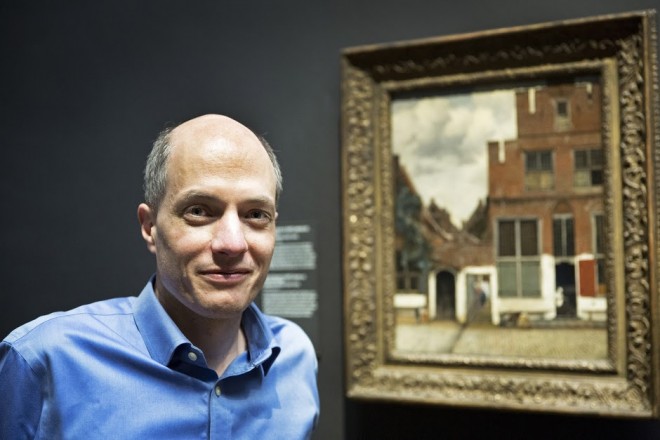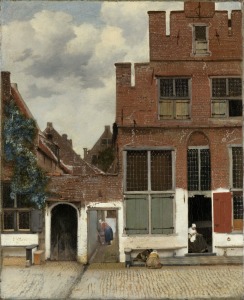Art as Therapy at Rijksmuseum
This coming Thursday, April 24th, the authors and philosophers Alain de Botton and John Armstrong will for the first time ever put the theories from their popular book Art As Therapy into practice at Amsterdam’s Rijksmuseum. An opening we will personally attend and an event we look forward to with high anticipations. Art as Therapy at Rijksmuseum is on until September 2014 and it will also take place in Melbourne, Australia, and in Toronto, Canada.
Back in the early autumn of 2013 when we decided to turn the Art Weekenders idea of ours – the site and all the plans we have around it – into reality, one of the guiding principles we attached to the project was to ensure that art is seen as something approachable. We’d like to consider art as a component that should be a natural part of anyone’s day-to-day life, be it as a part of a traveller’s itinerary, or for the general public who maybe spends more time at home.
We feel that art is often misunderstood: it’s no big secret that it quite often can come across as anything from unapproachable to right out elitist. At the same time, looking at any bigger city’s tourism figures, visits to most art museums keep on increasing with healthy percentages every year and you often see long lines outside some of the most popular venues. Even once inside a museum it’s quite normal to have big crowds fighting through to get to see the popular items. Louvre, Uffizi, the Van Gogh Museum: it sure rings a bell?

Alain de Botton at Rijksmuseum (photo Vincent Mentzel from Rijksmuseum press release)
bringing Art to the people
Thus, there is clearly an interest for the arts among the public, but the question then is, why does it still have this slightly unambiguous aura around it? There are obviously some hurdles in the way, details that often make museum experiences disappointing. More often than not it’s coming down to the presentation. Often when we look at the pieces of art on display many of us don’t have a good understanding for what we’re supposed to look at. It can often be how art is being packaged, the actual aesthetics of the presentation. Thankfully, there are museums which have already figured out that for instance wall colors can make a big difference for the viewer’s art experience.
At other times it can be the lack of information about what we look at that makes an art object difficult to understand. There are many cases for this for instance in Italy, where classic art is just not reaching out to a modern public. For me personally knowing what the story behind an art work is, who the artist behind it was and why the art was made, makes a huge difference. Though let’s face it; most people don’t have the time for the research needed or even if they have the time they don’t go to museums to read.
So what else can it be? Often what creates this “great art divide” is how museums and exhibitions are curated: quite often they are still set up as has been the case in totally different times for completely different audiences, without any attempts to modernise the process. As Alain de Botton himself says it, often a museum is put together “by art historians for art historians”. And that’s exactly why their book and project, ‘Art As Therapy‘ is taking the world by a smaller storm now.
[ale_one_half]
‘Night Watch’, Rembrandt van Rijn, 1642

‘The Jewish Bride’, Rembrandt Harmensz. van Rijn, c. 1665 – c. 1669
Alain de Botton’s Art philosophy
If you don’t know Alain de Botton yet, we feel it’s time to get acquainted. There are few people around who can so casually and convincingly bring the big questions from life to the table and create a workable framework around it, in such a way that people actually understand the ideas. He has over the years discussed many topics, such as The Art of Travel, The Architecture of Happiness, and now most recently, the world of the news media
. Just listen to any of his speeches (see video below or the long version of it) and you quickly realise that “the guy makes a lot of sense”. He for sure speaks directly to our hearts.
Of course, no big thinker will escape some criticism and there are those who might consider de Botton over-optimistic in his views, maybe even too intellectual to be able to bring the message home for a wider audience. But at the end, nobody can take away from him his great ability to give plenty of food for thought and get huge crowds to listen during his speeches or connecting with him via his life-affirming online project, The School of Life.
One of the approaches this modern philosopher has to art is by comparing our days to centuries past. Medieval art, accentuated especially by the Renaissance movement, always largely existed in the name of the Church. Almost every movement originated from there and it was used very cleverly as part of the Christian propaganda (not necessarily only used with a negative intonation here) as images of the ideal way of existing. When the tie between the two vanished and “art for art’s sake” became a term, art became more abstract and also lost a given space in people’s life: there wasn’t anyone dictating what to think of it any longer.
Art is our new religion, and museums are our new cathedrals. Art served as propaganda on behalf of the Christian Church. Now art should be propaganda on behalf of (…) psychology.
Alain de Botton also compares art to music. Music is, to say the least, an accepted form of cultural expression and today is dedramatised, no-one needs to understand what it is for. With art on the other hand, there are many confusions and no good understanding for the benefits it can have on the psyche. According to the two philosophers behind the Art as Therapy at Rijksmuseum, a lot of this divide can be solved by presenting art differently, by creating a platform where art talks to the intellect. In the right context people will experience it differently. Museums today are often organised in a chronological way, an idea that isn’t helping in establishing a connection with it.
Nobody is organising their books or CDs in a chronological order. Why is it then the norm with art?
How it will work? It remains to be seen. But at the end what we have to remember is that “art needs to be propaganda for the good things in life”.
[ale_one_half]
A Writer Trimming his Pen, Jan Ekels, 1784

The Little Street, Johannes Vermeer, c. 1658
What is art for you?
People often say that they don’t like art because they don’t understand it. It’s a funny thing to say, because the only understanding needed is your own interpretation, it’s really nobody else’s business what emotions an artwork awakens in you, we “just” have to take the time to let it speak to us. Ultimately, that’s what art should be like, to be used to mold our thoughts and emotions and, really, to help us understand ourselves better. It can be classified as “art as therapy”, but it can also be just simply enjoyed at face value, without being so to say “religious” about it. Curiously, just last week another edition of the Slow Art Day took place worldwide, an initiative somehow linked to the art experience movement, focusing on how not to rush. Clearly, there’s a trend we can spot now. Art is here to make a change.
Where do you stand with your own art experiences? Are you of the opinion that art is too snobbish? Do you feel that it is presented as too complicated, or maybe you think that’s the actual appeal of it, that art is complex and the best is to leave it that way? We’re curious to hear your thoughts in the comments below.
Art as Therapy at Rijksmuseum is one of the three international exhibitions with the same theme and will be on for half a year, until September. The two other venues part of the experiment are the National Gallery of Victoria in Melbourne and Toronto’s Art Gallery of Ontario. Some exciting times around the globe. You can learn more about the Art as Therapy project here – or why not buy the book? The actual book is information-packed about 150 artworks and gives us insights into how art can help with many conventional difficulties we are facing in everyday life.